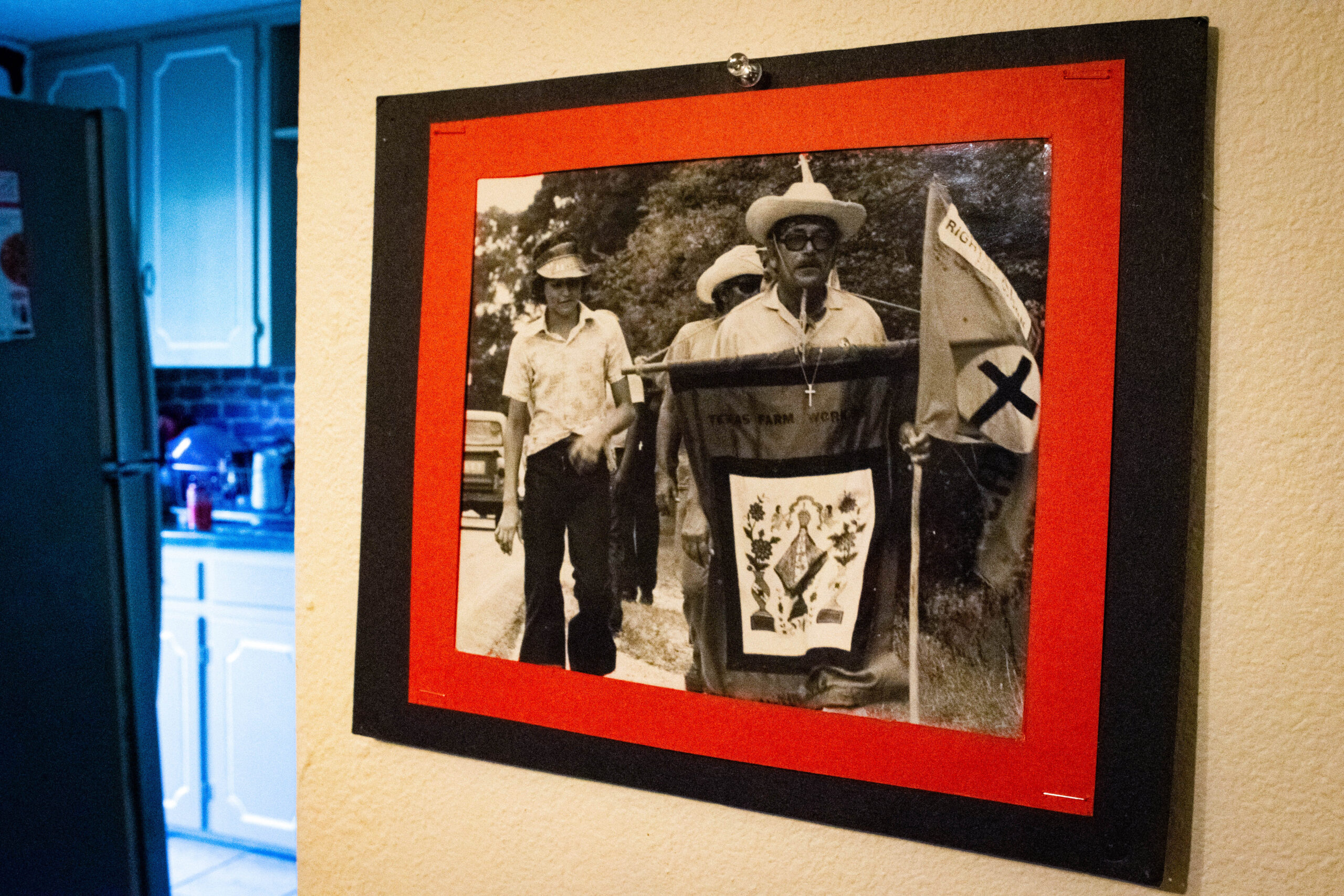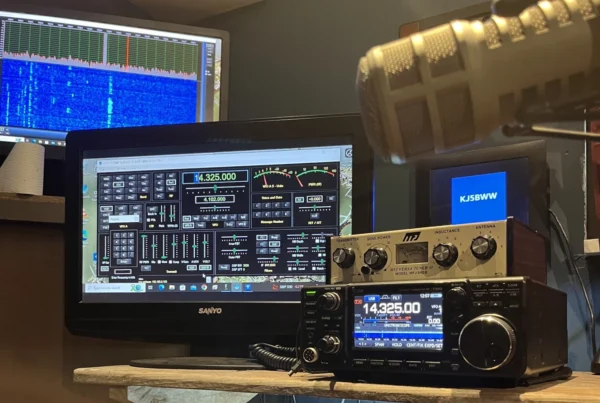This is part 2 in a series looking at the history of the Texas Farm Workers Union. Check out the rest of the series here.
Sitting at the dining room table of the Pharr, Texas, home of Norma Ramirez, I’m reminded of visits to my own tía’s.
There’s the family photos, the prominent artwork of the Virgen de Guadalupe, and somewhere, locked away in a room – undoubtedly because of this visiting stranger – I hear a cat meowing every once in a while, followed by the squawk of a bird likely annoyed with its sudden new roommate.
But what’s different from those visits I’m familiar with is what greeted me when I first stepped through the door.
“You can take a picture of anything you want,” Norma said then, gesturing around the room.
Arranged on tables and draped over couches all around the living room are artifacts of the United Farm Workers, but mainly of the Texas Farm Workers Union. Buttons, flags, banners and stacks of newspapers and clippings detail the exploits of the TFWU – weathered by age and from the campaigns they were carried or worn in.























